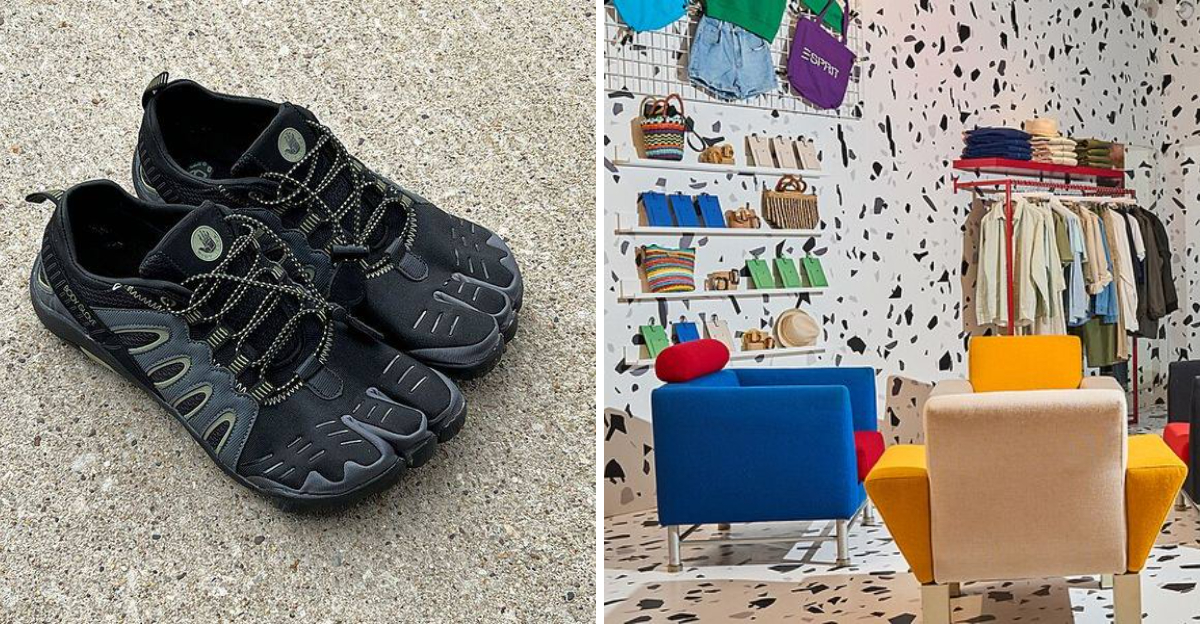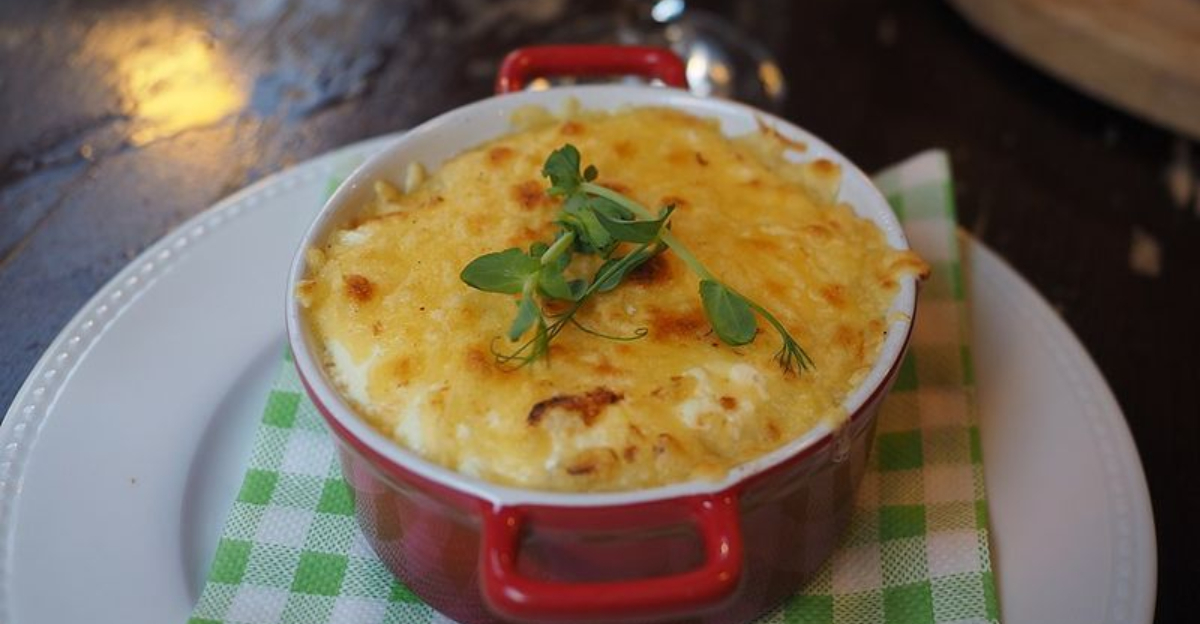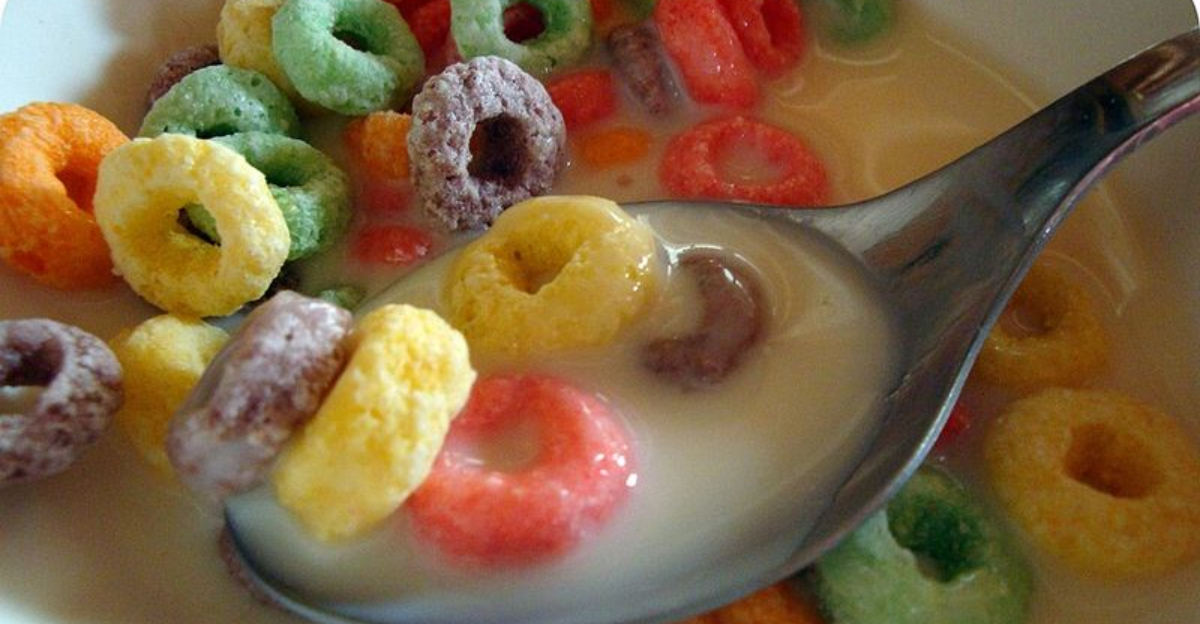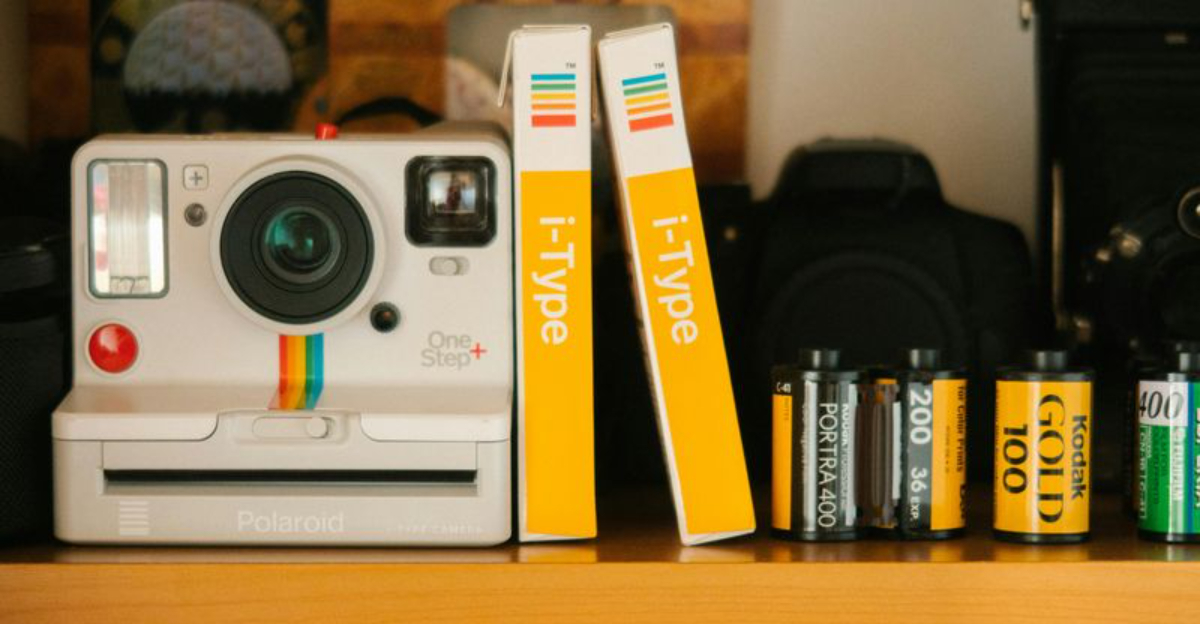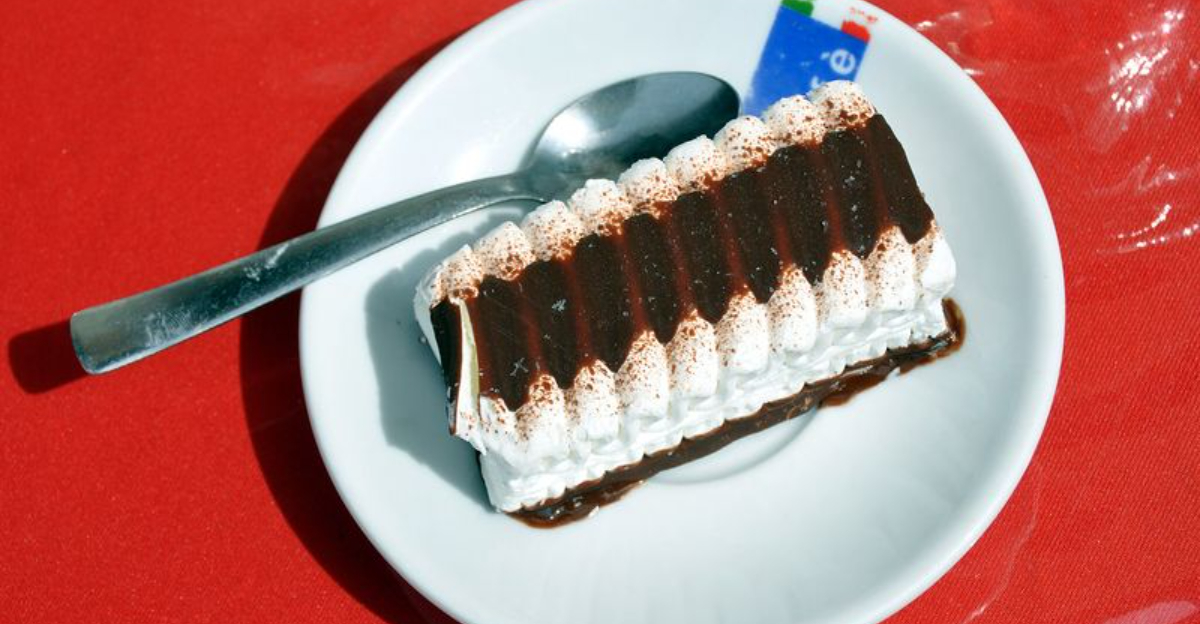20 Vintage Kitchens That Showcase Timeless Design
Step back in time and explore kitchens that prove good design never goes out of style. From the 1930s to the 1970s, these vintage spaces blend charm, function, and beauty in ways that still inspire today.
Whether you love pastel cabinets or sleek stainless steel, there’s something here that’ll make you smile and maybe even rethink your own kitchen.
20. Villa Cavrois Kitchen (1932, France)
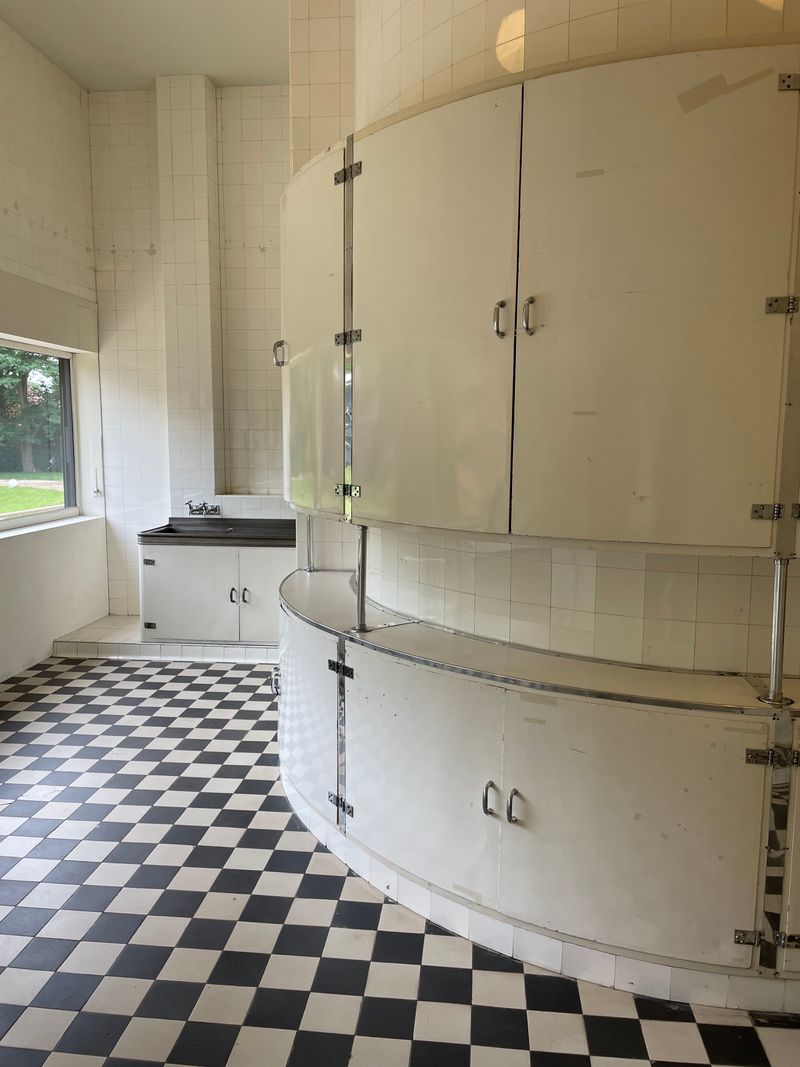
Imagine walking into a 1932 French mansion and finding a kitchen that looks like it belongs in a sci-fi movie. Villa Cavrois broke all the rules with its gleaming stainless steel and crisp tile surfaces.
Architect Robert Mallet-Stevens designed this space to be both beautiful and super practical. The geometric shapes and industrial materials were totally ahead of their time, proving that modernist design can age like fine cheese.
19. Classic 1930s Seattle Kitchen
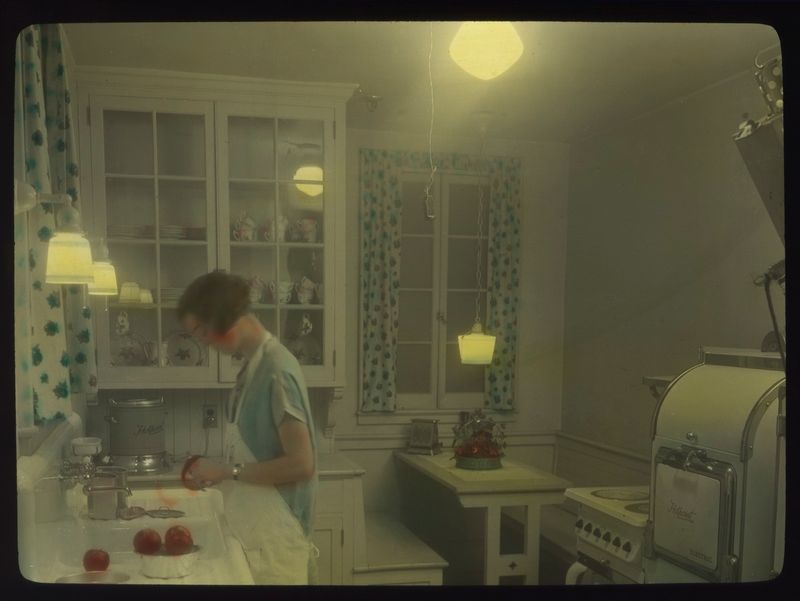
White cabinets in 1930s kitchens shone brighter than mere fashion, glowing with the promise of cleanliness and optimism when money was tight.
A Seattle kitchen from the Municipal Archives captures that spirit perfectly – light bouncing off spotless counters, the faint scent of soap lingering in the air.Every gleam told a story of care and perseverance. Homemakers turned those humble rooms into sparkling sanctuaries where warmth, meals, and memories came alive daily.
18. Melbourne Family Kitchen (circa 1935)
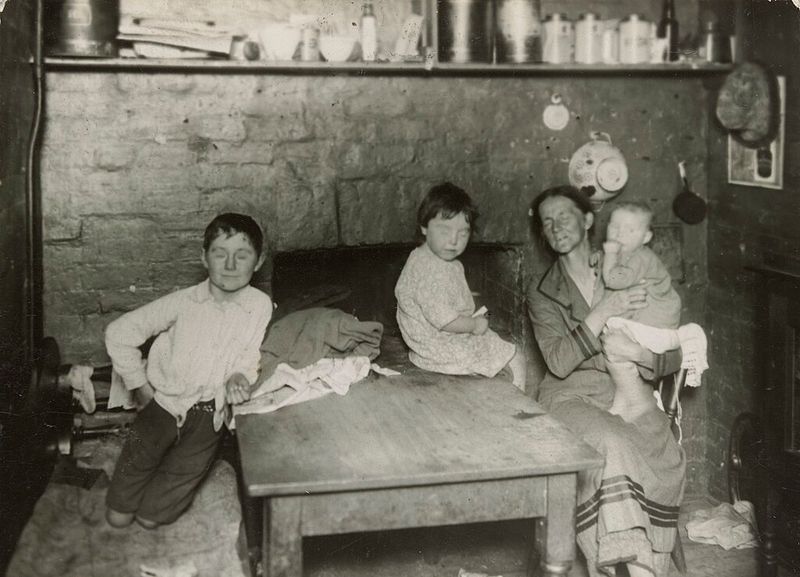
Fireplaces in kitchens might sound medieval, but in 1930s Melbourne they were absolutely essential. This Carlton home shows a family gathered around a sturdy scrubbed table, the true heart of the house.
Before electric ovens became common, that fireplace cooked every meal and kept everyone warm. The worn wood and simple furniture tell stories of countless dinners, homework sessions, and late-night chats.
17. Queensland 1940s Kitchen Cabinets
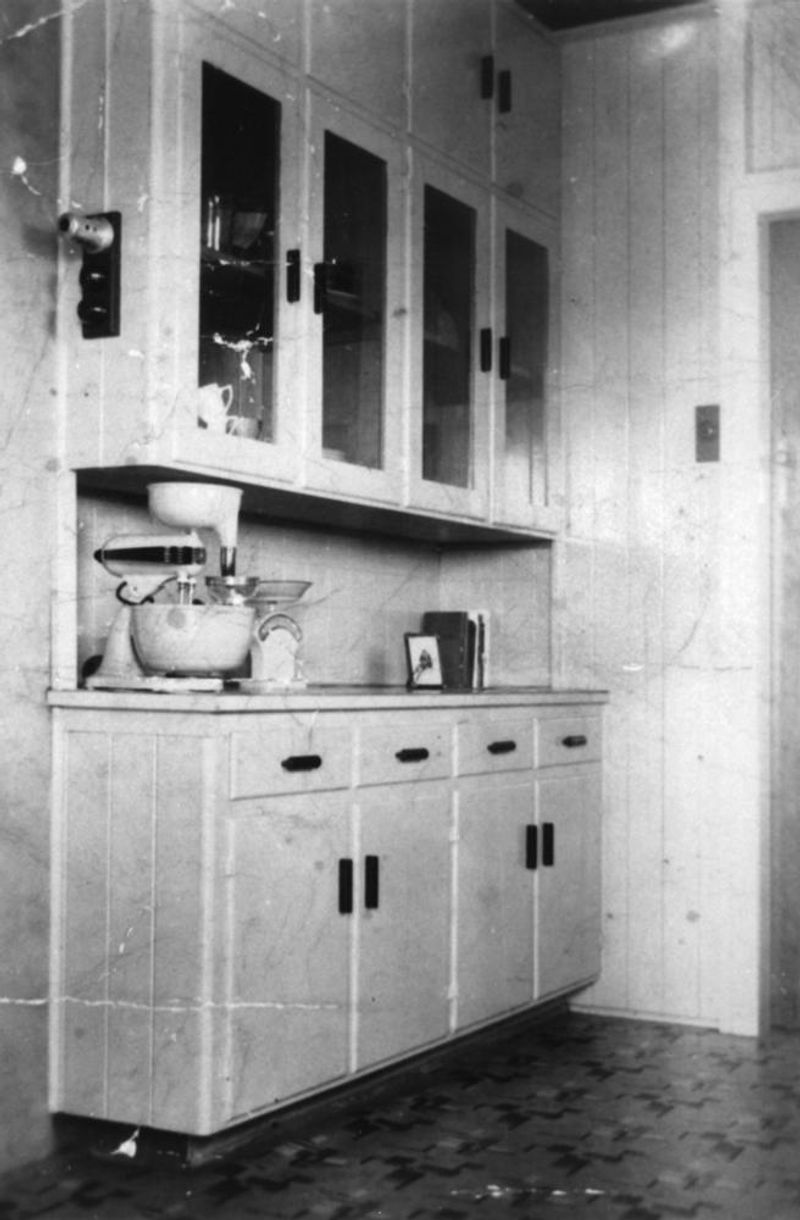
Enamel cabinets ruled 1940s kitchens like shiny superheroes, gleaming in colors that brightened long, sunny days. In Queensland, the scent of soap and warm air mingled as dishes dried on wire racks above linoleum floors tough enough for muddy paws and barefoot kids.
Australians knew beauty meant nothing without backbone, so their kitchens favored durability and ease. Those enamel cabinets didn’t just sparkle, they stood strong for generations.
16. Scottish Miner’s Cottage Kitchen (1940s)
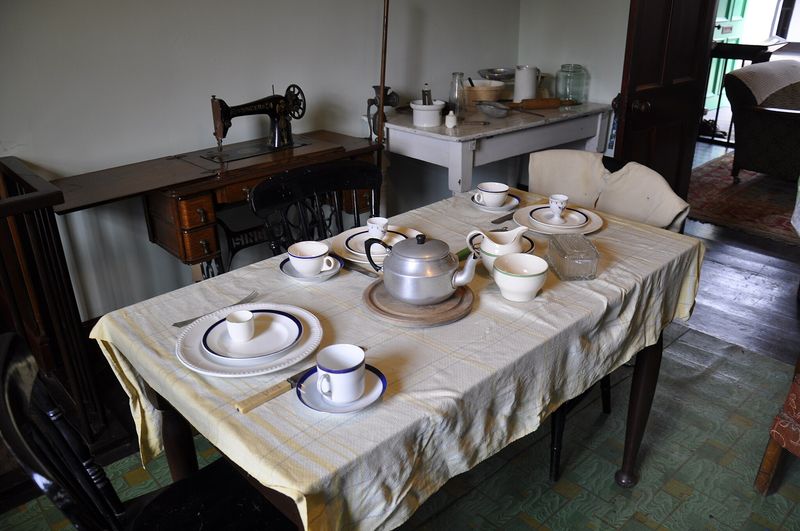
Life in a Scottish mining village meant kitchens had to be functional above all else. This 1940s cottage at Summerlee shows the no-nonsense utility vibe that hardworking families relied on.
Every inch of space mattered when you were raising kids on a miner’s wages. The simple shelves, sturdy sink, and basic cooker got the job done without any fuss or fancy extras.
15. Truman-Era White House Kitchen (1948-52)
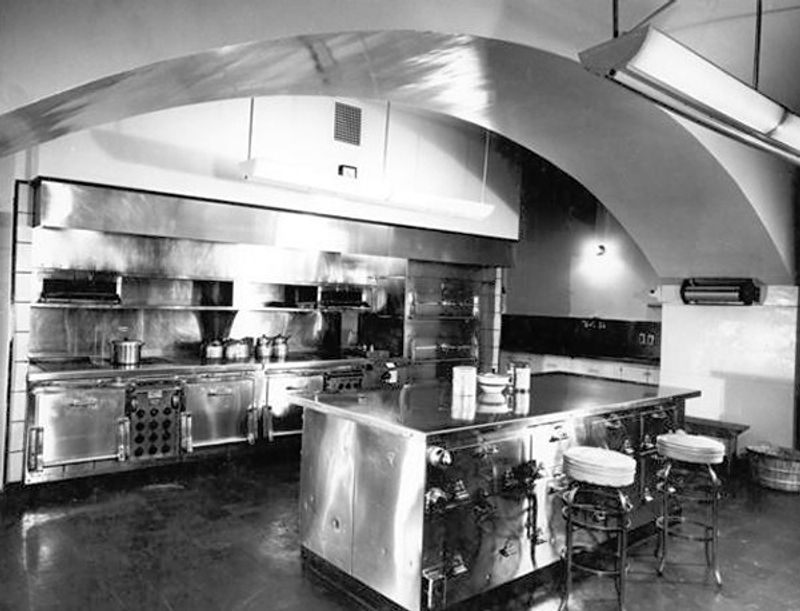
Cooking for presidents demanded precision, and in 1948 the White House kitchen delivered pure professionalism. The air carried the tang of polished steel and roasted meats, echoing off gleaming counters and hulking equipment that belonged more to a lab than a home.
Every clatter of pans marked another deadline met, another flawless meal plated. Cozy? Not a chance. It was a culinary command center where perfection wasn’t optional, it was expected.
14. Cossie Snyders Corner Kitchen (1952)
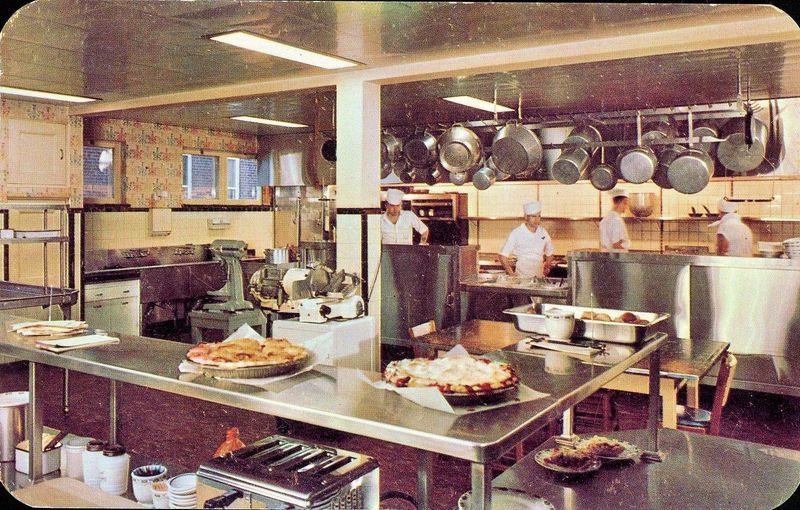
If kitchens could smile, this 1952 beauty would be grinning ear to ear. Cossie Snyders Corner served up pastel perfection that looked like it jumped straight out of a vintage postcard.
Soft blues, minty greens, and sunny yellows made postwar kitchens feel optimistic and fun. Families were celebrating peacetime prosperity, and their kitchens reflected that joyful, hopeful energy in every cheerful detail.
13. Strawbery Banke 1950s Kitchen (New Hampshire)
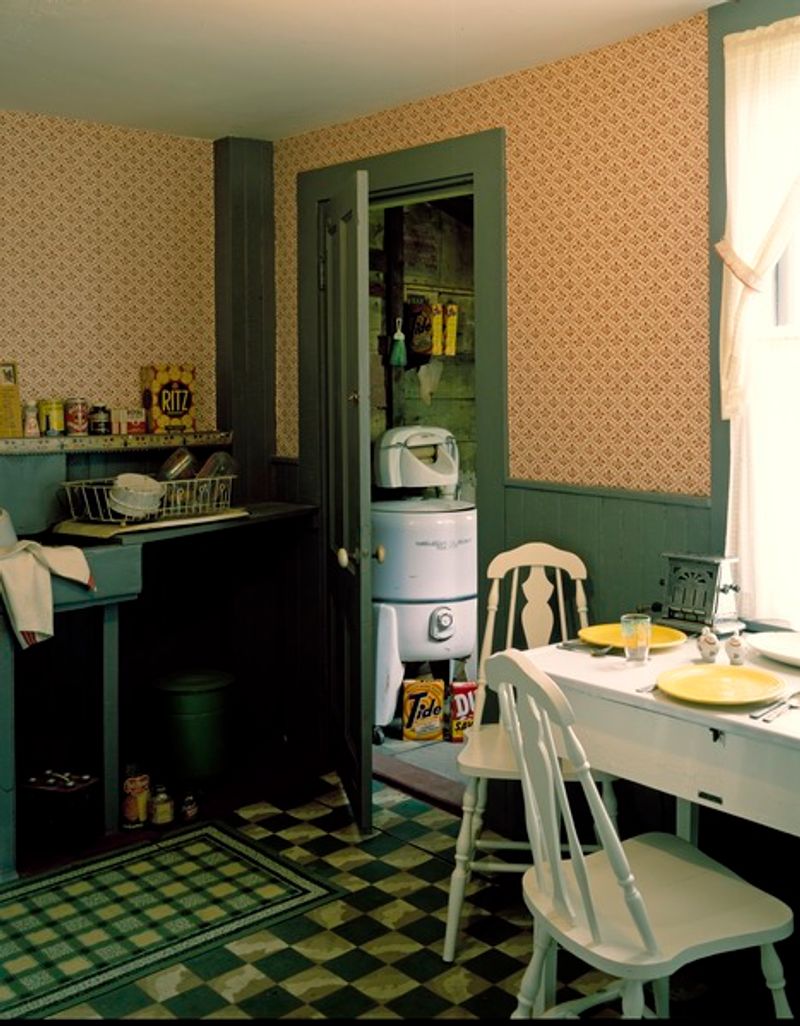
Strawbery Banke in Portsmouth doesn’t just display history, it lets you smell, see, and feel it come alive.
A recreated 1950s kitchen bursts with bubblegum colors, shiny chrome, and that fizzy atomic-age optimism. Every surface gleams with personality, from checkerboard linoleum to canisters that wink in the light. Stepping inside feels like a cheerful visit to grandma’s house, where coffee brews, pies cool, and midcentury joy hums in every corner.
12. White House Main Kitchen (1952)
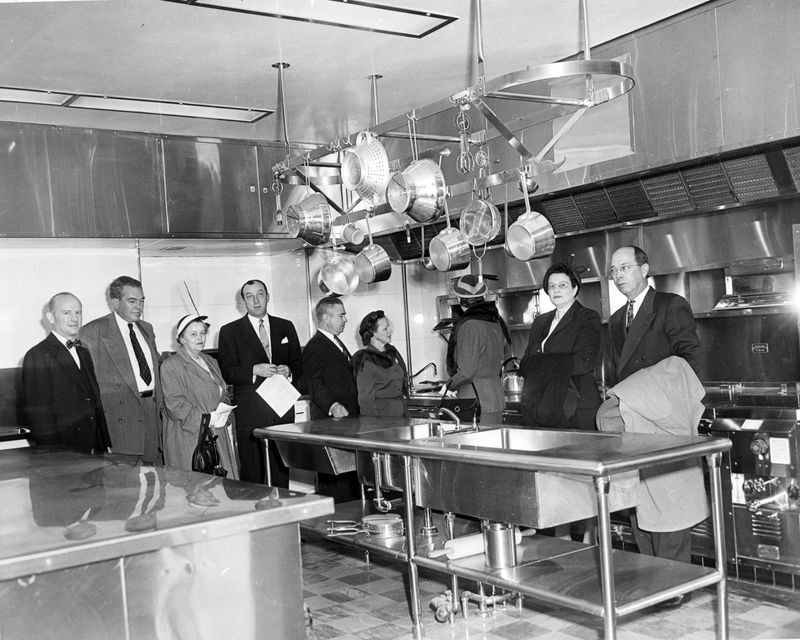
Four years after Truman’s grand remodel, the White House kitchen buzzed with order and purpose. Gleaming tiles smelled faintly of soap and steam, and towering racks clattered softly with polished pans ready for action.
Several ranges fired at once, turning out feasts fit for presidents and diplomats alike. Homey? Not quite. But every burner, shelf, and utensil served precision, proving 1950s efficiency could rival any modern professional kitchen with grace and power.
11. Michigan History Museum 1950s Dining Nook
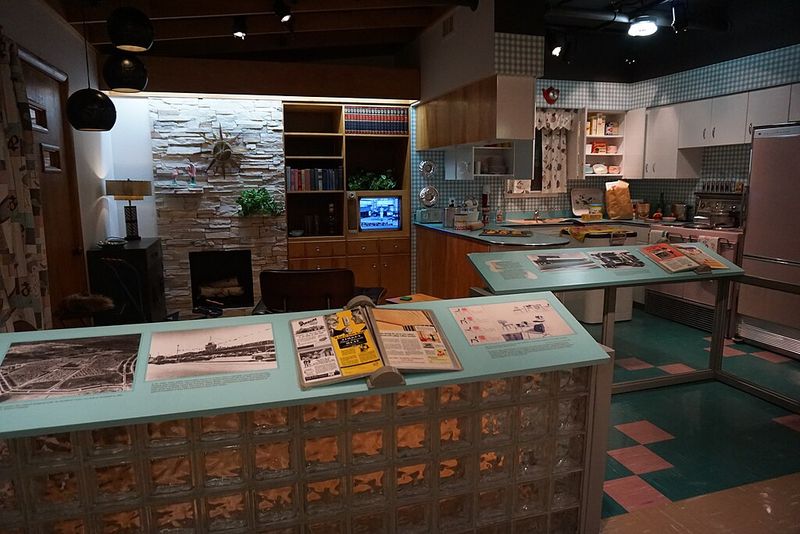
Breakfast nooks became the coolest spot in 1950s homes, and this Michigan museum exhibit shows exactly why. Families could squeeze in together for quick meals, homework help, or late-night snacks without the formality of a dining room.
The cozy booth-style seating and cheerful colors made every meal feel special. It’s the kind of space where kids actually wanted to hang out, and parents could keep tabs on everyone.
10. Michigan Museum Minty Kitchen Vignette
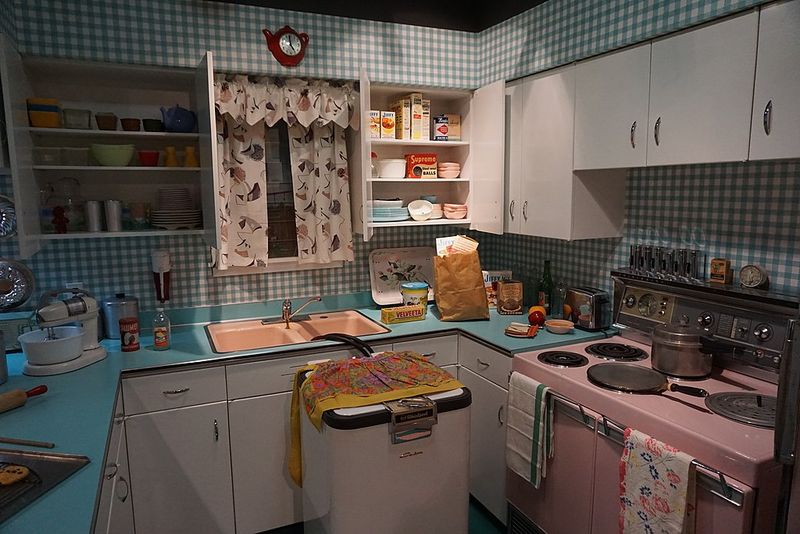
Mint green wasn’t just a color in the 1950s, it was practically a lifestyle choice. This Michigan museum vignette showcases those dreamy minty cabinets paired with a matching table that makes you want to pull up a chair immediately.
Why did everyone love pastels so much? After years of wartime austerity, people craved cheerfulness and color. These kitchens delivered happiness in every soft, soothing shade imaginable.
9. Ohio History Center 1950s Kitchen
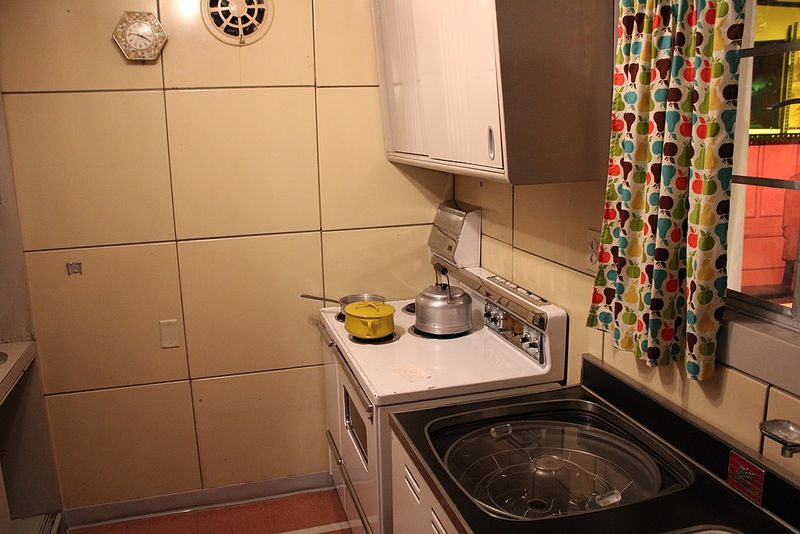
Chrome dinette sets are the superheroes of 1950s furniture – they’re nearly indestructible and impossibly cool. This Ohio History Center display features the classic combo of sparkly chrome legs, vinyl seats, and a wipeable Formica table.
Families loved these sets because they could survive spilled milk, homework disasters, and craft projects. Plus, they looked like something straight out of a diner, making every meal feel a little bit special.
8. German 1950s Alte Küche
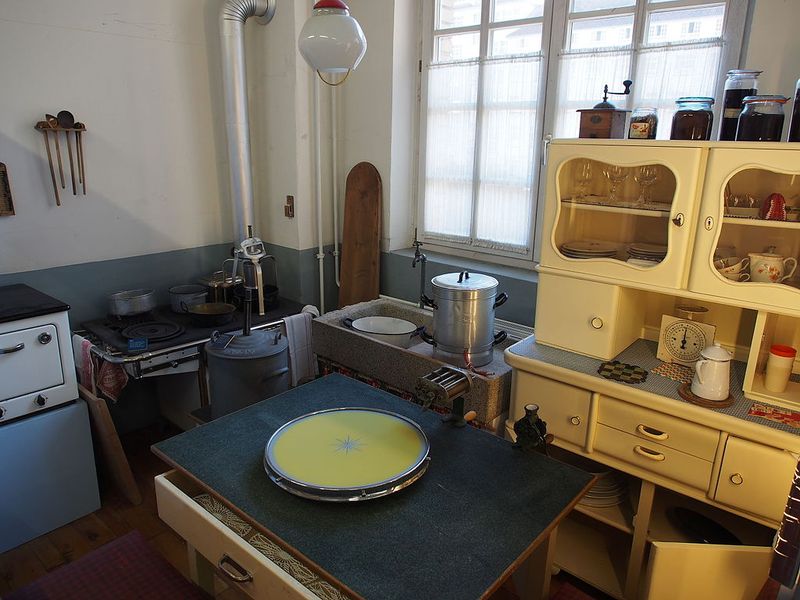
German ingenuity didn’t stop at engines; it reshaped how people cooked and lived. A 1950s Alte Küche hums with purpose, built around the clever work triangle that links sink, stove, and fridge in perfect rhythm. Every aroma of simmering soup or sizzling schnitzel fills a space designed for flow, not fuss.
Compact yet comfortable, every inch works hard, proving efficiency and warmth can share a kitchen with equal pride and precision.
7. Kortedala Swedish 1950s Kitchen
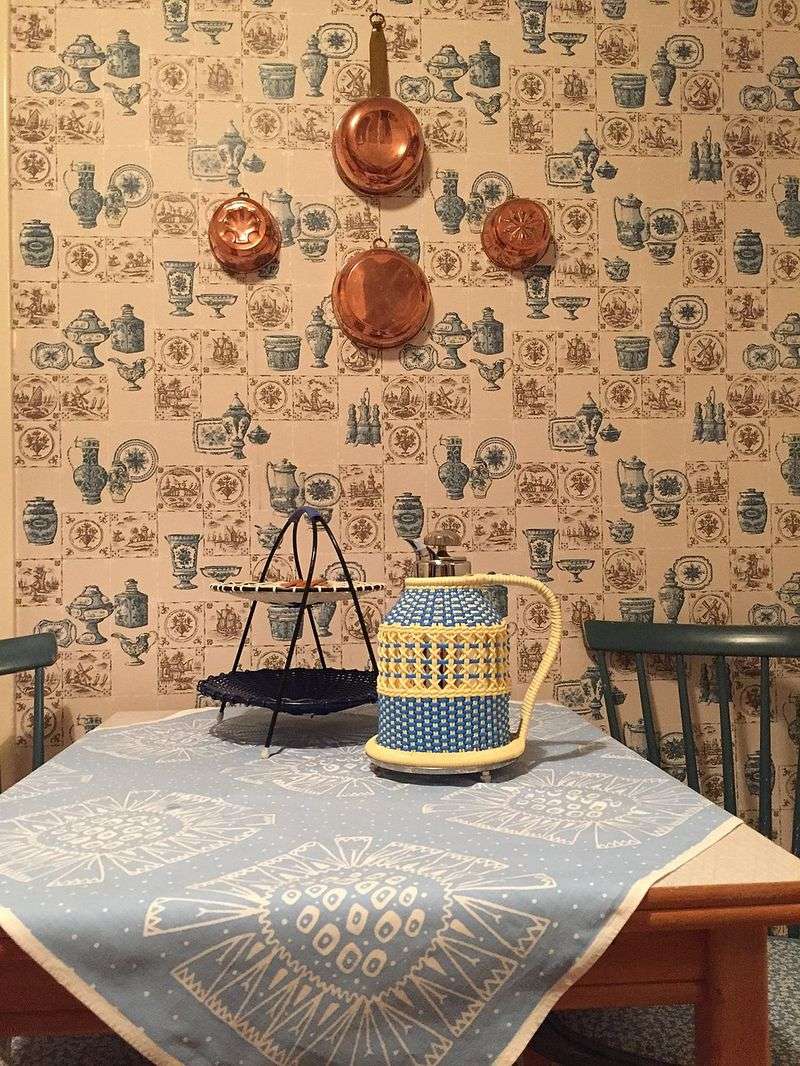
Scandinavian design knew early on that simplicity sings, and a 1950s Swedish kitchen like the one in the Kortedala museum shows exactly why. Sunlight pours across pale counters, neat shelves, and uncluttered lines that make cooking feel like meditation.
Every cabinet and drawer serves a purpose, every surface feels intentional. Nordic homes mastered harmony between beauty and utility, proving elegance can whisper softly while keeping daily life smooth, bright, and beautifully balanced.
6. Leipzig Trade Fair Built-In Kitchen (1958)
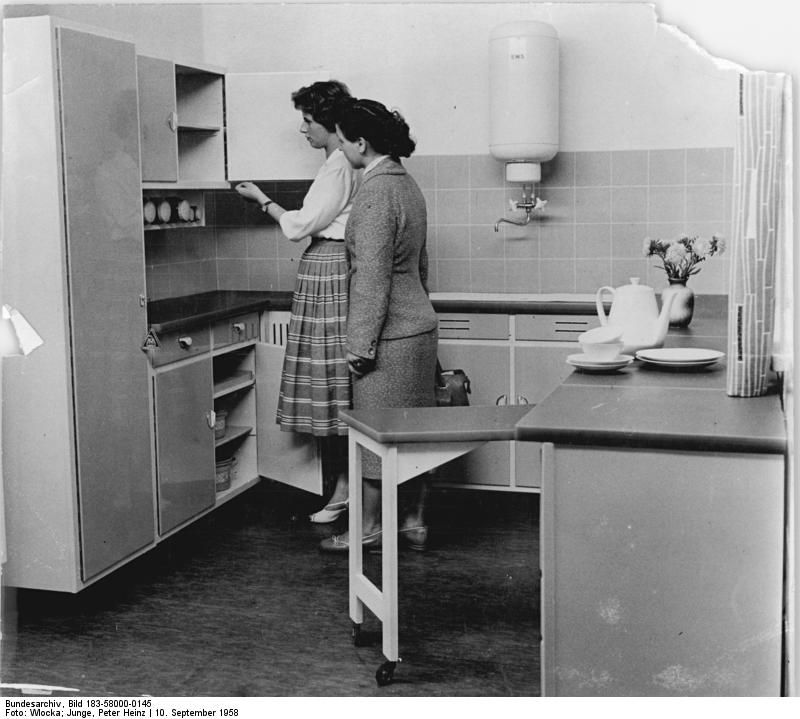
By the late 1950s, the Leipzig Trade Fair promoted standardized built-in kitchen units in the GDR. Built-in cabinets that fit together like puzzle pieces were revolutionary for their time.
This exhibit showed homeowners they could customize kitchens to fit any space. The concept of standardized units that worked together efficiently would eventually transform kitchens worldwide, making modern fitted kitchens possible.
5. Berlin Stalinallee Apartment Kitchen (1950)
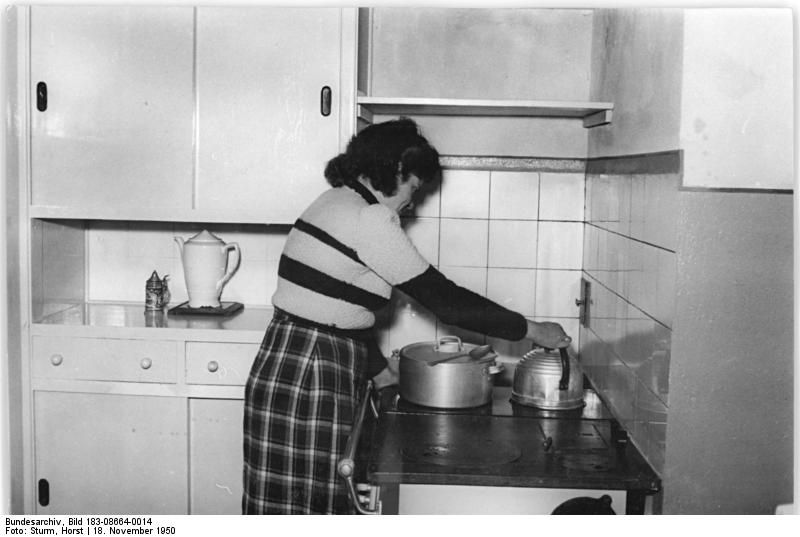
undefined
A remarkable moment unfolds in 1950 Berlin, as the first meal sizzles inside a new Stalinallee apartment. After the ashes of war, the aroma of hot soup and fried onions carried a scent of victory and new beginnings. East Germany’s grand boulevard stood as a bold symbol of socialist rebirth, where each simple kitchen promised dignity and comfort.
Modest, yes, but filled with pride, warmth, and the delicious promise of a fresh start.
4. Welsh 1960s House Kitchen
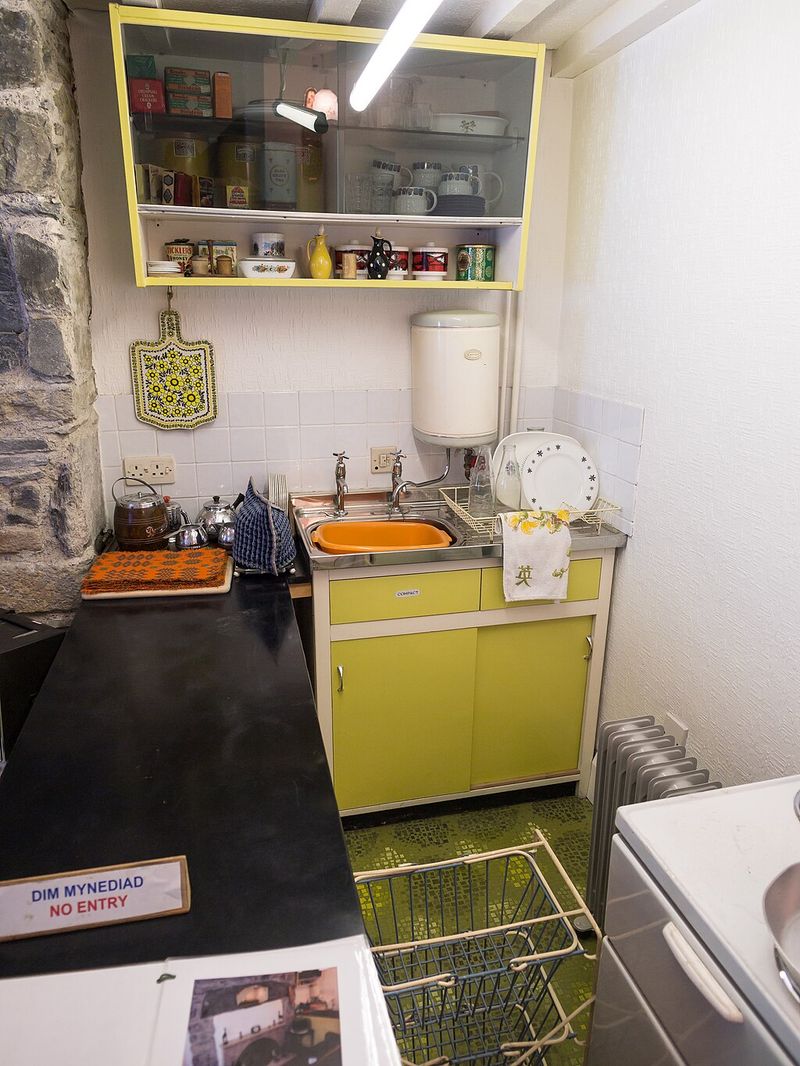
Wood returned to 1960s kitchens with a vengeance, replacing chilly metal and dull paint with the cozy scent of polish and pine. In a Welsh kitchen at the National Slate Museum, honey-toned wooden fronts meet crisp tiled splashbacks, blending beauty and practicality.
British homes found a sweet spot between nostalgia and modern flair, where simmering stews filled the air and every cupboard creak whispered warmth, proof that craftsmanship and comfort could happily share the same space.
3. Singapore HDB Kitchen (1970s-80s, View 1)
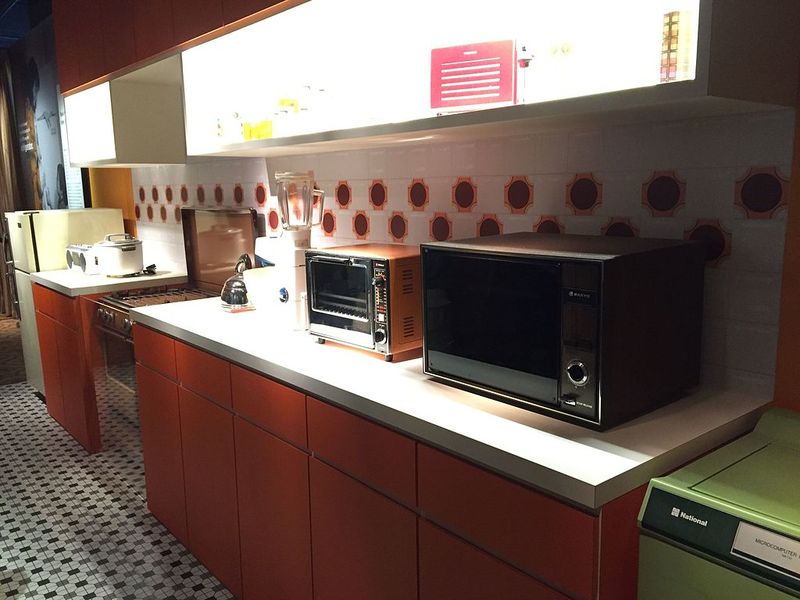
Singapore’s HDB flats housed millions of families in compact, efficient apartments, and their galley kitchens were masterclasses in space-saving design. Every centimeter counted, so cabinets climbed walls and appliances fit into precisely measured spots.
Though small, these kitchens powered family life for decades. Singaporean cooks proved you don’t need a mansion-sized kitchen to whip up incredible meals – just smart planning and creative use of vertical space.
2. Singapore HDB Kitchen (1970s-80s, View 2)
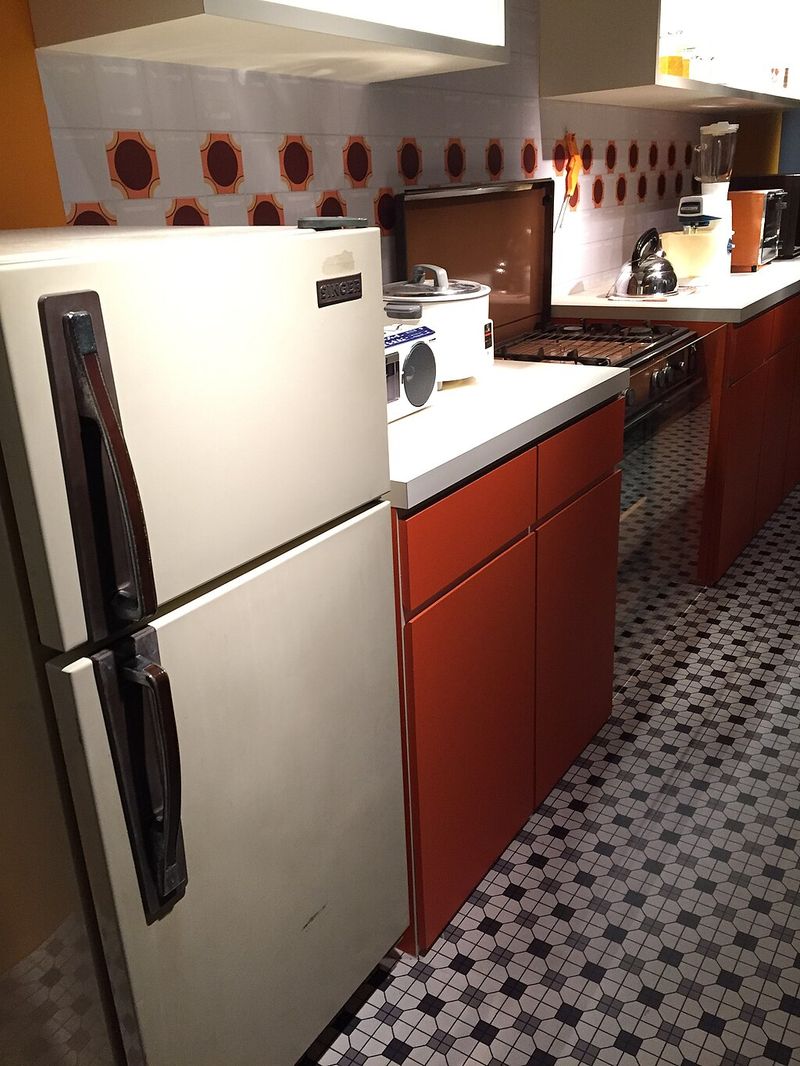
Another angle of Singapore’s iconic HDB kitchen reveals how appliances and cabinets worked together in perfect harmony. Built-in storage maximized every inch, while standardized fixtures kept costs down and maintenance simple.
These kitchens represented Singapore’s remarkable transformation from developing nation to modern powerhouse. Practical, affordable, and surprisingly functional, they sheltered the culinary traditions of diverse communities creating home-cooked magic daily.
1. Summerlee 1960s Miner’s Kitchen
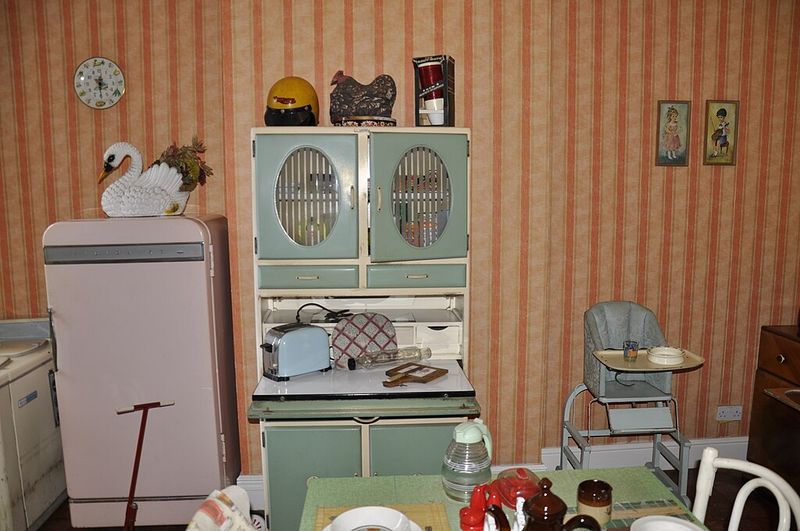
By the 1960s, even modest mining families enjoyed modern conveniences like Formica countertops and proper utility sinks. This Summerlee Museum kitchen shows how working-class homes were finally getting upgrades that made daily life easier.
Formica was basically magic – affordable, durable, and available in fun patterns. Paired with a deep sink perfect for washing everything from dishes to muddy work clothes, these kitchens represented real progress for hardworking Scottish families.

